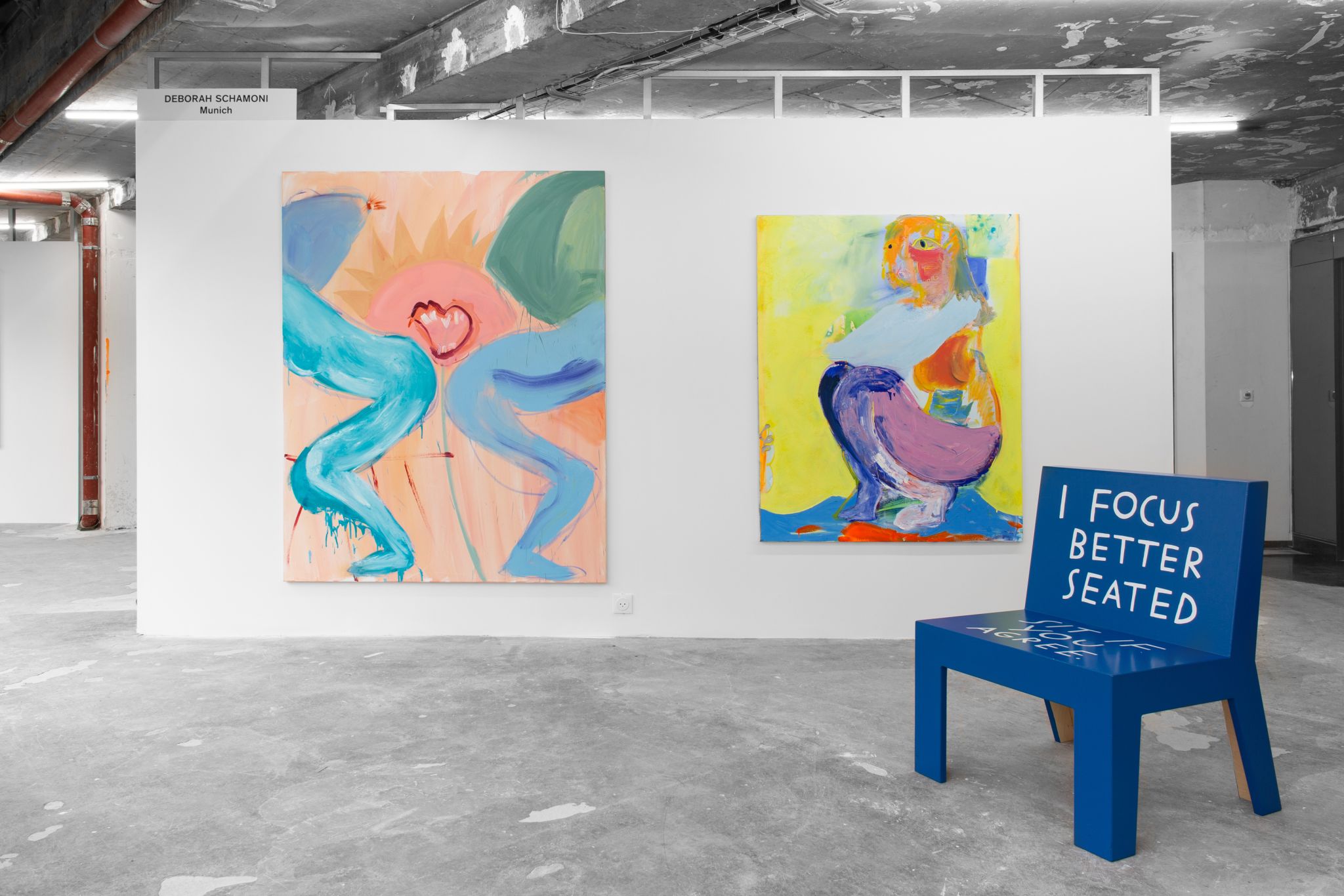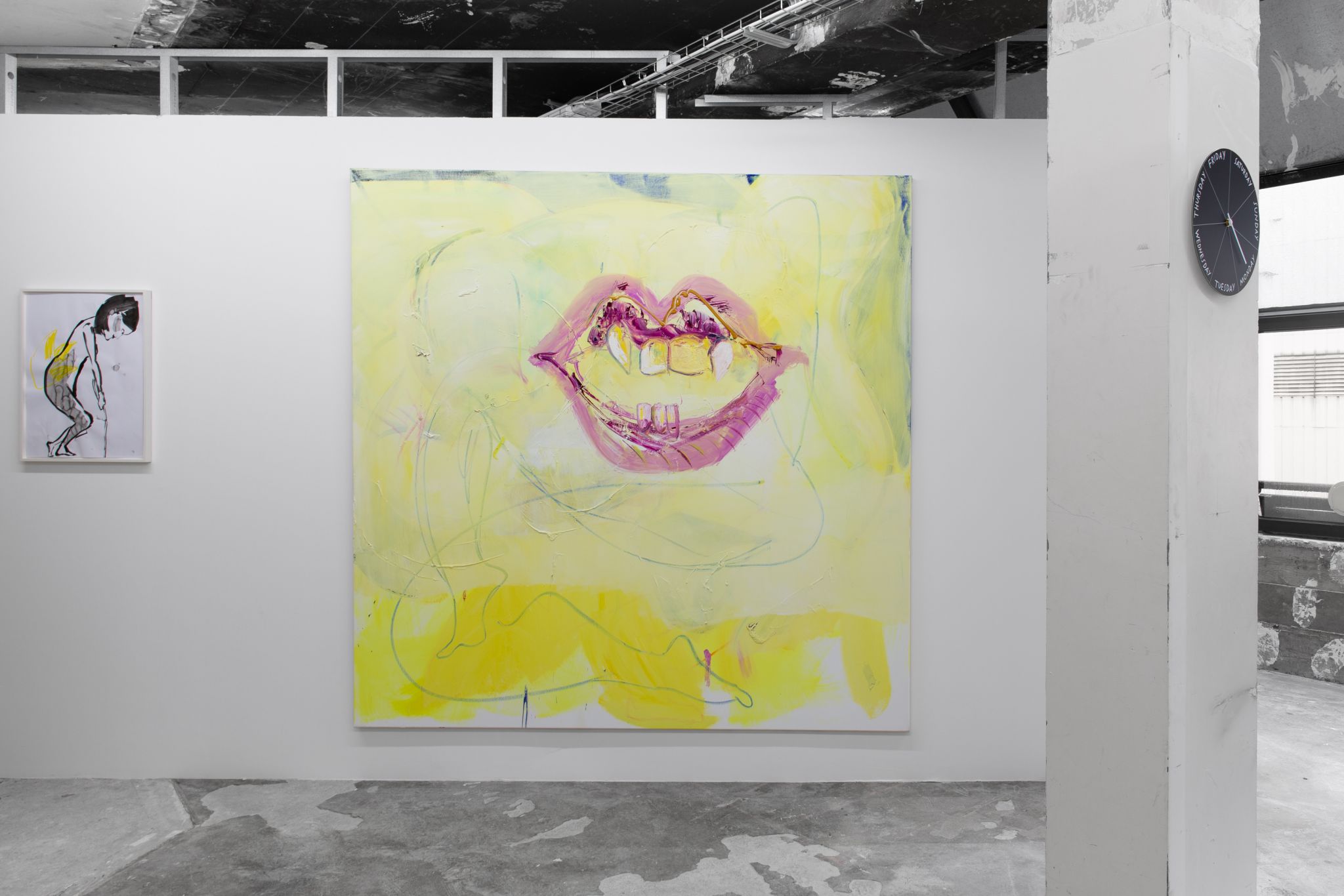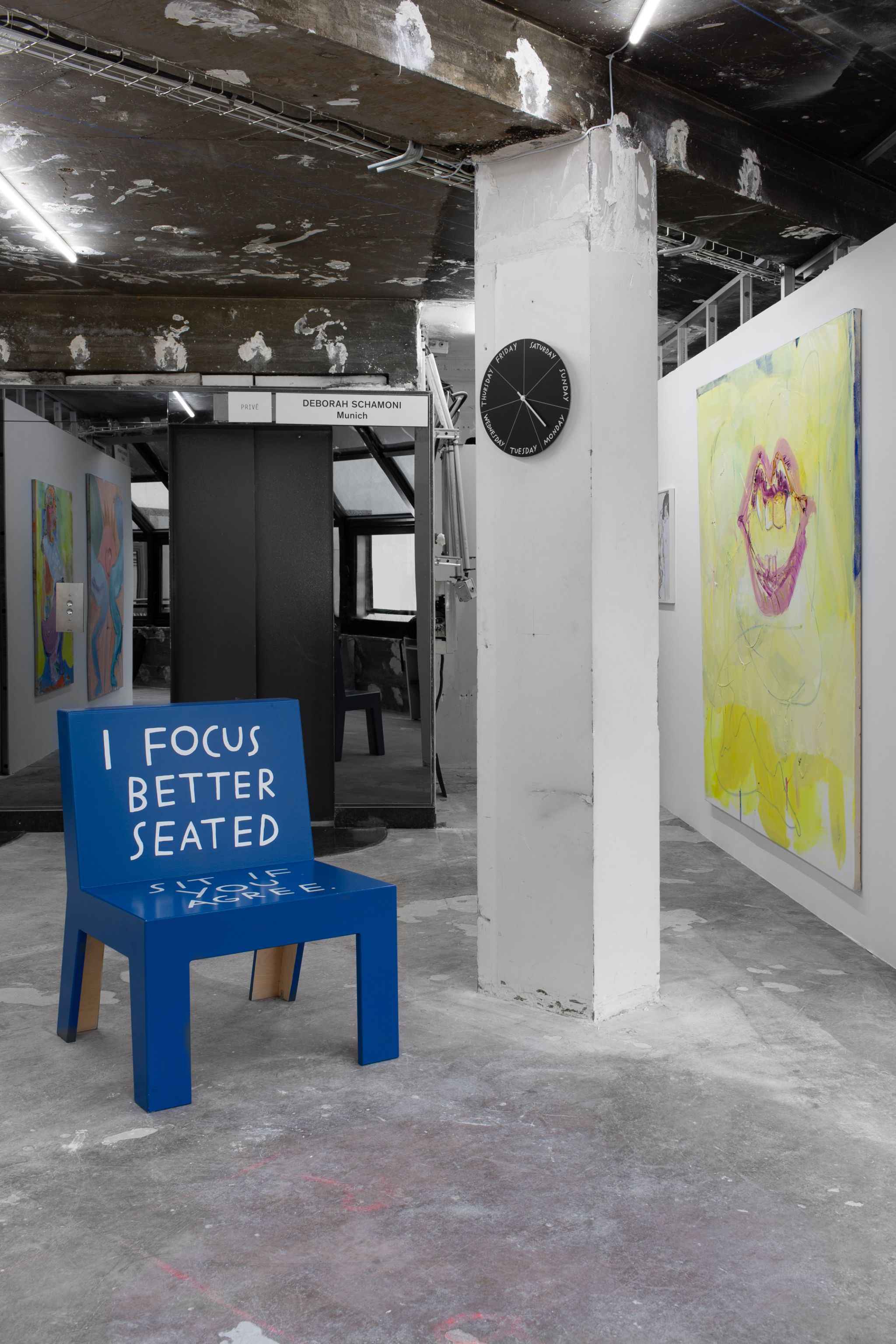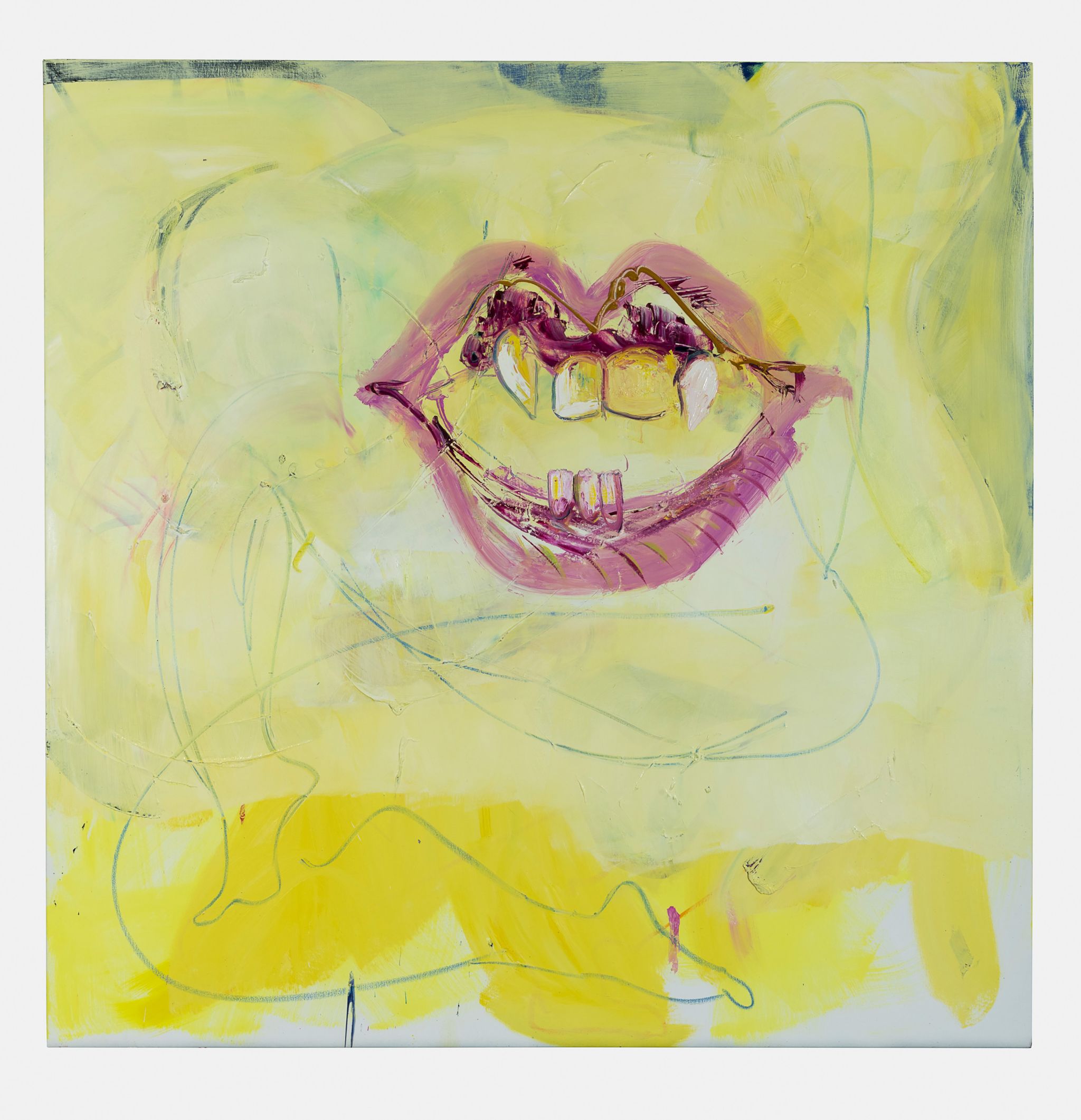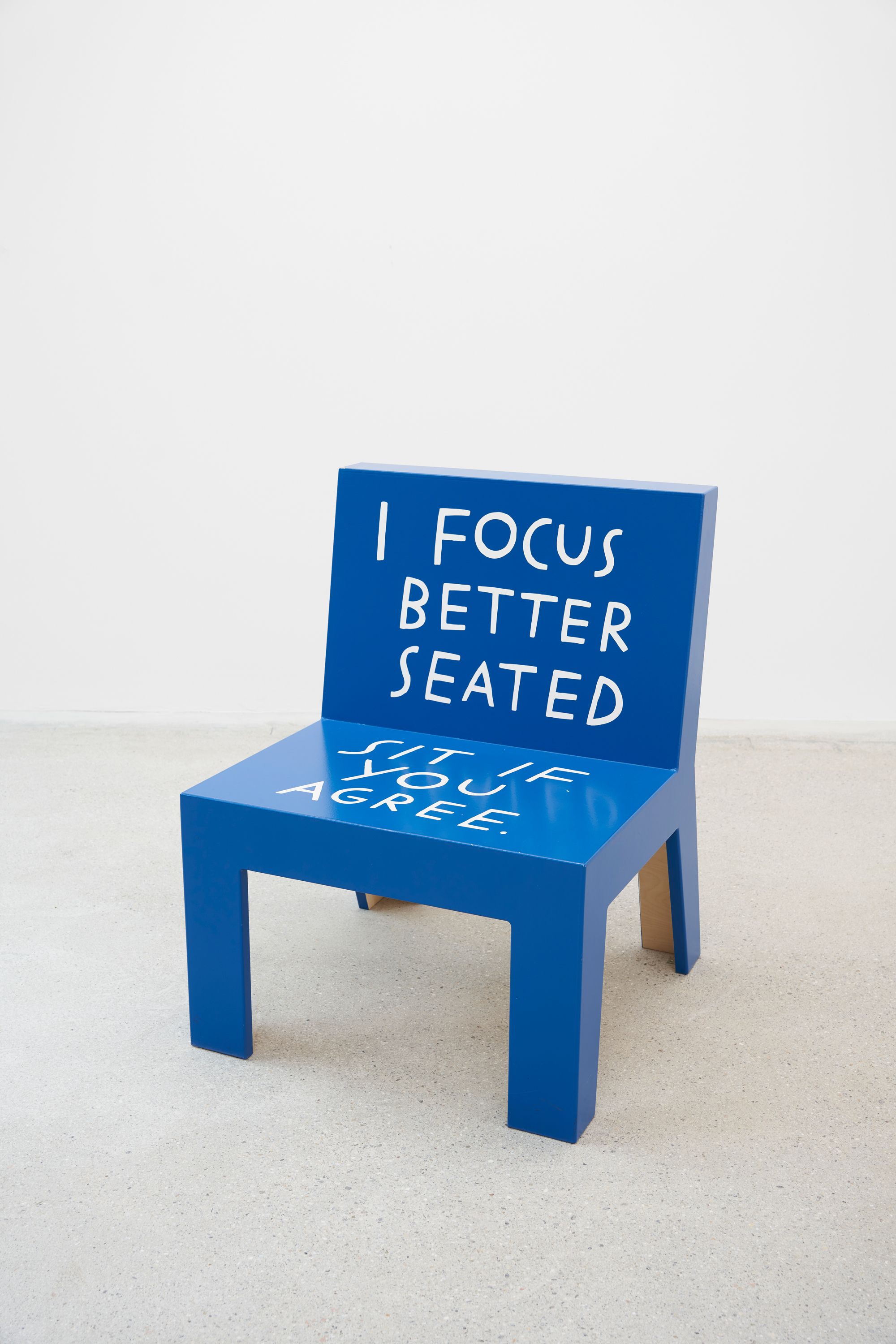-
In her distinctive approach to painting, Aileen Murphy generates imagery through a combination of slow layering and fast applications of oil paint, animating a delicate urgency and sparking sensations of both epiphany and discomfort. Fictive characters are the focal points of Murphy’s paintings. The figures fluctuate under the viewer’s eye, revealing and concealing themselves behind and via the materiality of the medium. The vivid painterly gestures suggest exuberant joy and stimulation, but seem quite more complex upon closer inspection: the surface consists of scribbles and marks, translucent watercolor base layers reveal traces of erasures, and text blurbs are scratched in the wet paint. In Murphys hands, painting is an act of imaginative action—colour and gesture are live wires.
read more
Wednesday – Friday 12 – 6 pm
Saturday 12 – 4 pm and by appointment
Paris Internationale 2022
Aileen Murphy
Shannon Finnegan
19.10. – 23.10.2022
Aileen Murphy
Age, 2022
Oil and oil stick on canvas
200 × 200 cm
Finnegan Shannon
Do you want us here or not (MHR) - Chair, 2021
Plywood, paint
89 × 64 × 69 cm
